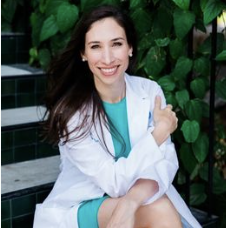The Unexpected Heartbreak: When One Child Comes Easily but Another Does Not

Exploring Secondary Infertility with Reproductive Endocrinologist, Dr. Nola Herlihy.
Expert: Dr. Nola Herlihy
Infertility is a deeply personal journey, often shrouded in silence and heartache. As the medical director and co-founder of Reproductive Medicine Associates of Houston, my team and I regularly help women navigate this journey with compassion and expertise.
For many women, the path to motherhood begins joyously, with a first child coming easily and filling their lives with love and happiness. However, when the time comes to expand their family, they encounter an unexpected and often devastating hurdle: secondary infertility. This condition, where a woman who has previously given birth faces difficulty conceiving again, can be a surprising reproductive challenge that catches parents off guard.
The joy and fulfillment of having a child are juxtaposed with the pain and frustration of not being able to have another, leading to a profound sense of sadness and confusion. It is a common misconception that once a woman has had one child, subsequent pregnancies should come easily, but the rate of secondary infertility is common and affects about 11 percent of couples in the United States— roughly the same rate as primary infertility. According to the Centers for Disease Control, about six percent of women who have had a previous birth have trouble getting pregnant after a year of trying.
Understanding Secondary Infertility
As I explain to my patients, if a woman has previously given birth and is under 35 years old and hasn’t been able to get pregnant in a year of consistently trying or is over 35 years and hasn’t been able to get pregnant in six months of consistently trying, she is experiencing secondary infertility and should seek medical help. This timeline exists because time is an important factor in fertility and women should not wait too long, especially if they are older. This timeline also assumes regular menstrual cycles. If a woman is experiencing irregular cycles, defined as less than 21 or more than 35 days, she does not need to wait to see a fertility specialist.
A woman with secondary infertility is different from a woman who experiences more than one miscarriage. That is characterized as recurrent pregnancy loss, and has its own unique diagnostic and treatment considerations.
The Emotional Toll of Secondary Infertility
Secondary infertility is not just a physical struggle but also an emotional one. I hear a range of emotions from patients dealing with secondary infertility. Many feel guilty because they already have one child and think they should be satisfied. Others struggle with intense sadness because they know the joy of parenthood and long to experience it again.
One of my patients with two children felt guilty about wanting a third. I reassured her there is no guilt or shame in wanting to build the family she desires—and I mean that. Whether it’s two children or five, seeking help to fulfill that dream is completely valid.
Potential Heath Reasons for Secondary Infertility
Understanding the potential health reasons behind secondary infertility is important for those affected. Common medical factors that can contribute to this condition include:
- Age
Age plays a crucial role in secondary infertility, as a woman’s fertility naturally declines over time. This is a function of diminishing quantity and quality of eggs. As a woman ages, there is an increased likelihood of chromosomal abnormalities in her eggs, which decreases the chance of implantation and ongoing pregnancy.
- Hormonal Issues
Hormonal imbalances like hypo or hyperthyroidism and elevated prolactin can cause secondary infertility. PCOS is a common hormonal disorder that can affect fertility. PCOS involves three diagnostic criteria: irregular cycles, elevated androgens (like testosterone), and polycystic appearing ovaries. PCOS is a lifelong condition, but its severity can increase over time, affecting fertility.
- Anatomical Issues
Anatomical issues can also develop after a first pregnancy, leading to secondary infertility. Tubal factor infertility, where the fallopian tubes become blocked, is one such issue. Tubes can be blocked due to pelvic infections, endometriosis, or other inflammatory conditions.
Complications during delivery such as c-section, infection, significant bleeding, and retained products of conception can lead to scar tissue development in the uterus, which can affect a woman’s ability to subsequently conceive.
- Changes in Sperm Parameters
Sperm parameters may decline over time, leading to difficulty conceiving. Sperm quantity may be especially affected by reduced testosterone levels, anatomic abnormalities that form over time such as a varicocele, and worsening chronic medical conditions like diabetes.
- Menstrual Cycle Changes as a Red Flag
One of the indicators for seeking treatment sooner is a change in menstrual cycle length. As women age, their cycle frequency can shorten before it lengthens again, indicating the start of the perimenopausal transition. If a woman notices her cycles becoming shorter, from every 28 days to every 21 days, for example, it can be a sign of diminished egg quantity and quality.
When to Seek Treatment
The general age/time rules for primary infertility apply to secondary infertility. As noted, women should consider seeking medical support for infertility if they have been unable to conceive after one year of regular, unprotected intercourse if they are younger than 35 or after six months of such if they are 35 or older. And, if a woman is 40 or older, they should consider an evaluation after just a few months of trying.
However, there are specific situations when women should seek help sooner. For example, if they or their partner have a major medical condition, if they have irregular cycles, had difficulty conceiving their first child, or have symptoms of a hormonal disorder (e.g., fatigue, hair loss), they should not wait the full period suggested for typical infertility.
To seek treatment, most women do not need a referral to see a fertility specialist and can call a clinic directly for an appointment. However, talking to an OBGYN can be helpful for trusted referrals, as can recommendations from friends or family who have had positive experiences with fertility centers.
What to Expect at an Appointment
When engaging in treatment for secondary infertility, expect a thorough pregnancy and medical history review for both partners. It is always better when a couple comes together to the appointment to enhance efficiency and understanding. It’s a common misconception that infertility is solely a woman’s problem, but there are three key ingredients to making a baby: egg, sperm, and uterus. Optimizing all of them is crucial.
The discussion will be centered around past deliveries and mode of delivery (vaginal vs c-section), miscarriages, complications, and any subsequent treatments like D&C.
After the consultation, a transvaginal ultrasound will be conducted to assess the woman’s anatomy, focusing on the uterus and ovaries. Further imaging may be indicated, depending on the history and results of the basic ultrasound. Blood work is often done, including infectious disease screening, hormone testing, and testing of ovarian reserve. A semen analysis will often be recommended to evaluate the quality of the male partner’s sperm.
Treatment and Success Rates
Fertility treatment success rates depend on each woman’s individual prognosis. While physicians cannot change a woman’s biology or ovarian reserve, they can optimize her existing biology to support pregnancy. Severe diminished ovarian reserve or advanced maternal age can make treatment more challenging, but reproductive endocrinologists often achieve success with women of all ages. Over 50 percent of women who seek IVF treatment for secondary infertility do successfully conceive.
Every treatment plan is personalized. Some women prefer more aggressive interventions, while others opt for lighter treatments. It’s about finding the right balance and making a clear plan with her care team. Whether a woman is just gathering information or ready to jump into treatment, the goal is to communicate all of her goals to her physician, so they can deliver a clear plan and execute it efficiently.
No Shame in Seeking Help
Secondary infertility is a complex condition influenced by various factors. Understanding the underlying causes and seeking early evaluation can help manage and address this condition. There should be no guilt or shame in a woman wanting to build the family she desires, and there are treatment options available to help achieve that dream.








